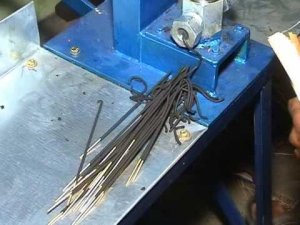Since early times the burning of incense in religious and social functions has been practiced in India. Dhup an aromatic powder is burnt in Indian homes as a fragrant fumigant and is reputed to possess antiseptic properties. Agarbattis are available in different colors and perfumes.The burning time of agarbatti varies from 10 min to 2.5 hours according to quality and size. Agarbatti is also available in other forms such as Dashang (Sticky paste or Powder) deep (cones, and dhup tablets etc).
About 70% of agarbattis manufactured are of cheap quality containing only charcoal powder or low-quality sandalwood powder with a mixture of 50% of “wood gun” powder. Cheap perfumes are used to give them a top coat.superior varieties use, essential oils, purified resins, natural fixatives like amber, musk, and civet are used along with synthetic aromatics.
COMPOSITION
A variety of materials have been used in making incense. There has been a preference for using logically available ingredients. For example, sage and cedar were used by the indigenous people of North America, trading in incense materials comprised a major part of commerce along the silk road and other trade routes, called Incense Route.
COMBUSTIBLE BASE
The combustible base of a direct burning incense mixture not only binds the fragrant material together but also allows the produced incense to burn with a self-sustained ember, which propagates slowly and evenly through an entire piece of incense with such regularity that it can be used to mark time.The base is chosen such that it does not produce a perceptible smell.Commercially there are two types of incense base:
a) FUEL AND OXIDIZER MIXTURES: Charcoal or wood powder forms the fuel for the combustion while an oxidizer such as Sodium Nitrate or Potassium nitrate sustains the burning of incense Fragrant materials are combined into the base prior to formation as in the case of powdered incense materials or after formation as in the case of essential oils.
b) NATURAL PLANT BASED BINDERS: Gums such as Gum Arabic or Tragacanth are used to bind the mixture together. Mucilaginous material which can be derived from many botanical sources is mixed with fragrant materials and water.
CULTURAL VARIATIONS
ARABIAN
In most Arab countries, incense is burned in the form of scented chips or blocks called bakhoor. This is usually burned on special occasions like weddings or on Fridays or generally to perfume the house.The Bakhoor is usually burned in a mabkhara , a traditional incense burner. It is customary in many Arab countries to pass bakhoor amongst the guests in Majlis.
INDIAN
Incense stick, also known as agarbatti and joss sticks, in which an incense paste is rolled or molded around a bamboo stick, is one of the main forms of incense in India. The bamboo method originated in India and is distinct in Nepal/Tibet and Japanese method of stick making which don’t use a bamboo core.There are about 5500 incense companies in India which take raw unperfumed sticks hand rolled by approx 2,00,000 women working part-time at home, and then apply their own brand of perfume, and package the sticks for sale.An experienced home worker can produce 4000 raw sticks a day.People light incense sticks for worshiping God, or for perfuming their home.
TIBETAN
Tibetan incense refers to a common type of incense found in Tibet, Nepal and Bhutan. These incenses have a characteristic “earthly” scent to them. Ingredients vary from cinnamon, clove and juniper to Kusum flower, ashwagandha or shahi jeera. Many Tibetan incenses are thought to have medicinal properties.Their recipes come from ancient Vedic texts that are based on even older Ayurvedic medical texts.
METHOD OF MANUFACTURING
Herbs, flowers, essential oils, barks, roots, charcoal are finely ground to smooth paste and then rolled on to a bamboo stick and then dried under the sun. Special wood like sandalwood, Ailanthus malabaricum which yields halmadi and other natural ingredients were geographically only available in Karnataka.
CONCLUSION
Besides the more obvious spiritual reason for burning incense stick is, it is also used to drive away small bugs and insects. It has a dual effect i.e, it pleases our nose and also keeps away insects & bugs. Choosing the right type of incense is just not about what is more pleasing to our nose but what is actually good for us.A study has found that burning incense produce fine particles and chemicals compounds that may irritate lungs and damage our health.If anyone is prone to the respiratory problem, have a young baby or child at home, or have a family member with the lung problem, it is safer to avoid using incense sticks.
Some of the most popular incense fragrances and their benefits for our body are:
a) Sandalwood incense stick: Sandalwood incense stick is good for health and mind.It helps to relieve stress and instantly lift our spirit and soul, and relax and calm our body.
b) Frankincense incense stick: It can help with our symptoms of depression and anxiety.
c) Cedar and pine incense stick: Traditionally cedar and pine incense stickares used for driving away evils.It creates positive energy, beating off the bad and promoting inner strength.
d) Cinnamon and citrus incense stick: Use of cinnamon and citrus incense stick can sharp our mind and also help to heighten our awareness.
e)Lavender incense stick : Lavender have distinct aroma which helps us to sleep . It helps in reducing the feeling of sadness , grief and depression.







